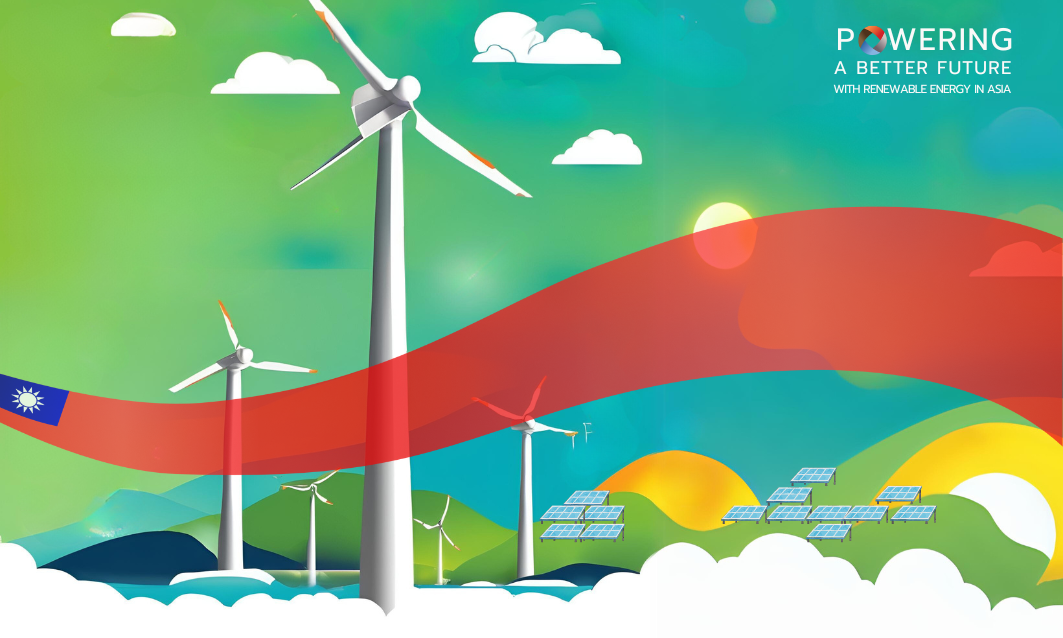Articles
Exploring Taiwanese Renewable Energy Policy as a Global Environmental Leader
19 March 2024

Taiwan and Environmental Policy
Taiwan is one of the world’s leading environmental leaders in green and renewable energy industries. Since the end of 2013, Taiwan has used renewable energy for 8.7% of all national energy. It aims to reach 20% of domestic energy attributable to renewable energy sources by 2025. This is part of a policy to reduce coal energy consumption and increase energy from Liquefied Natural Gas (LNG). The policy also aims to increase solar power to 20 GW and offshore wind power to 5.7 GW by 2025.
Solar and Wind as Taiwan’s Main Renewable Energy
Taiwan is a country that can produce energy from a variety of renewable sources. However, there are also many limitations. For example, biogas energy from agricultural wastes and geothermal energy have not yet been fully generated, and hydropower from dams is restricted by terrain and earthquakes. As a result, Taiwan relies primarily on renewable energy from solar and wind power.
Solar Power in Taiwan
Solar energy is the main source of renewable energy in Taiwan. In 2023, solar power generated 12.4 GW of electricity. Moreover, the Taiwanese government aims to make 7.5 million households use solar energy. Therefore, solar energy and LED have been determined as continuous development industries in the future.
Wind Power in Taiwan
Wind power is one of the most abundant sources of energy in Taiwan. In 2016, Taiwan had 346 wind turbines generating power capacity of 682 MW. Currently, wind power from both onshore and offshore wind turbines is used in Taiwan, generating 2.6 GW of electricity in 2023. Wind energy, therefore, is another major renewable energy that drives Taiwan.
Why is renewable energy a priority in Taiwan?
Due to the island terrain, Taiwan has needed to rely on 90% of imported oil for energy production. Consequently, sustainable development and reducing dependence on oil, coal, and conventional energy are extremely important issues for Taiwan. Taiwan’s policies and developments are therefore highly focused on renewable energy generation so that Taiwan can reduce imported energy and ensure energy sustainability. As a result, Taiwan is now a country with a steady growth in renewable energy production, both solar and wind energy, in order to reach the goal of producing renewable energy for domestic use for 20% of the total energy by 2025.
Sermsang Power and Renewable Energy in Taiwan
Currently, Sermsang Power has invested in the Fishery Solar Project in Tainan City, Taiwan, with a production capacity of 17 MW and an investment value of not more than TWD 1,064 million, or not more than Baht 1,220 million. The transactions were done through SITW1 Company Limited, which is 100% owned by Sermsang International (Taiwan), and Sermsang International Company Limited, a subsidiary with 100% owned by Sermsang Power. In addition, Sermsang Power has signed a Memorandum of Understanding (MOU) in a business partnership with J&V Energy Technology Company Limited, which specializes in clean energy to get opportunities for renewable energy business growth. The company also collaborates with a subsidiary of J&V Energy and Revo Power Company Limited in the study of onshore wind energy projects in Pingtung, Taiwan, with a capacity of 38 MW and an investment value not exceeding 1,220 million baht.
Source
https://www.trade.gov/market-intelligence/taiwan-renewable-energy-market
https://en.wikipedia.org/wiki/Renewable_energy_in_Taiwan
https://en.wikipedia.org/wiki/Solar_power_in_Taiwan
https://en.wikipedia.org/wiki/Wind_power_in_Taiwan
https://asianinsiders.com/2023/07/11/taiwans-drive-for-renewable-energy-is-creating-huge-opportunities-for-western-power-companies/





